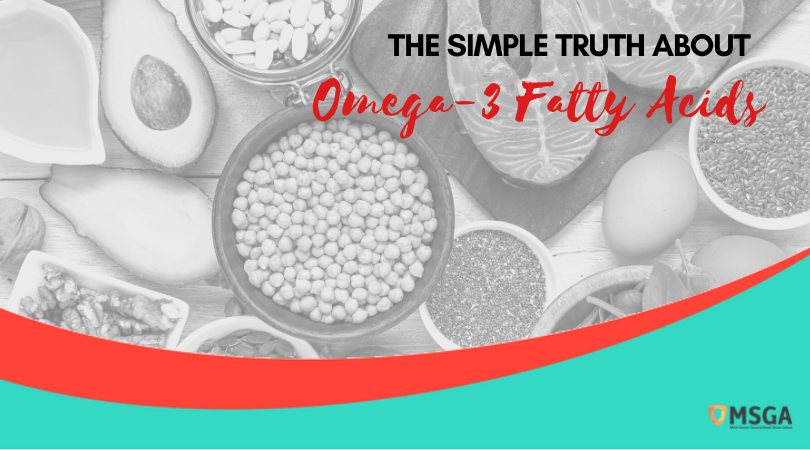Omega-3 fatty acids have many impressive health benefits. However, you might feel like you need a degree in chemistry in order to understand them. Terms like eicosapentaenoic and docosahexaenoic acid sound complicated. Then you find out that you need to balance omega-3 fats with omega-6 and omega-9 versions too. On top of that, some of the research in this area has been conflicting and inconclusive. Still, it’s worth hanging in there. Experts agree that these dietary fats are an important part of a healthy diet. In this article we are revealing the simple truth about omega-3 fatty acids.
Understanding the Health Benefits of Omega Fatty Acids:
- Protect your heart. The American Heart Association recommends consuming sources of omega-3 fatty acids like fish and fish oil to help lower your risk for cardiovascular events. While some studies have produced mixed results, this can be a helpful strategy, along with regular exercise and other positive lifestyle habits.
- Fight depression. There’s also evidence that omega-3 fatty acids may provide relief for depression. That’s especially true for postpartum women who are breastfeeding.
- Promote brain health. Sharpening your memory is another positive effect. You may be able to slow down cognitive decline as you age.
- Enhance your vision. What about eye health? Omega-3s have shown promising results in treating many ocular conditions, from dry eyes to macular degeneration.
- Have a healthy baby. Pregnant women and infants may need extra omega-3s. That’s because they play an essential role in neurological and retinal development.
- Reduce other health risks. The anti-inflammatory properties of omega-3s give them far-ranging powers. However, be cautious about claims in areas where research to date is limited, such as in epilepsy and multiple sclerosis.
Consuming Omega Fatty Acids:
- Seek variety. Omega-3s are like a big family of polyunsaturated fats. Out of the 11 members, 3 are most significant, and you can recognize them by their abbreviations. ALA is found mostly in plant foods, while EPA and DHA come from animals.
- Eat more fish. Aim to eat at least 2 servings of fish a week, especially fatty fish like salmon, tuna, mackerel, and trout. These foods are also an excellent source of calcium, phosphorus, and many minerals and vitamins. If you’re watching your weight, bake and broil your catch instead of frying it.
- Enjoy plant foods. There are plenty of vegetarian and vegan options as well. You’ll find high levels of ALA in chia seeds, walnuts, algal oil, and flaxseed. Keep in mind that while your body can convert ALA into EPA and DHA, the process is very inefficient.
- Consider supplements. Most adults may be able to get adequate amounts of omega-3s from their diet alone. However, supplements may be helpful if you don’t eat fish or have certain conditions such as rheumatoid arthritis.
- Store properly. Fish oil and capsules can become rancid over time because they react with oxygen. To prolong their life, keep your opened products in your refrigerator or any place that is cool, dry, and dark. Throw out anything that has a strong odor or fishy aftertaste.
- Practice moderation. It’s easy to stay safe if you observe a few precautions. Limit your consumption of fish that are high in mercury. That includes swordfish, orange roughy, and Chilean sea bass. Check with your doctor before taking supplements if you have shellfish allergies or issues with blood clotting.
A diet rich in omega fatty acids can help you take care of your mental and physical health. Eat fish and other foods that provide these essential nutrients and talk with your doctor about your individual needs.

